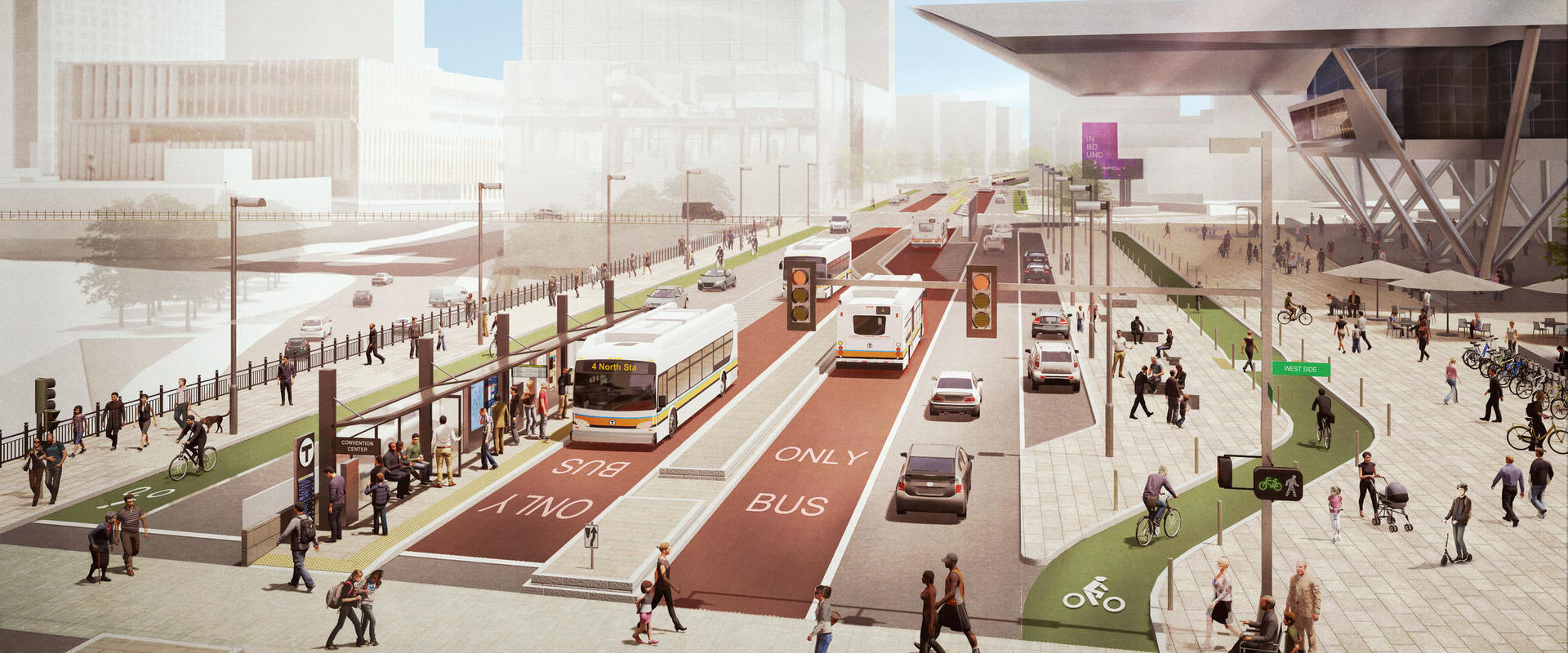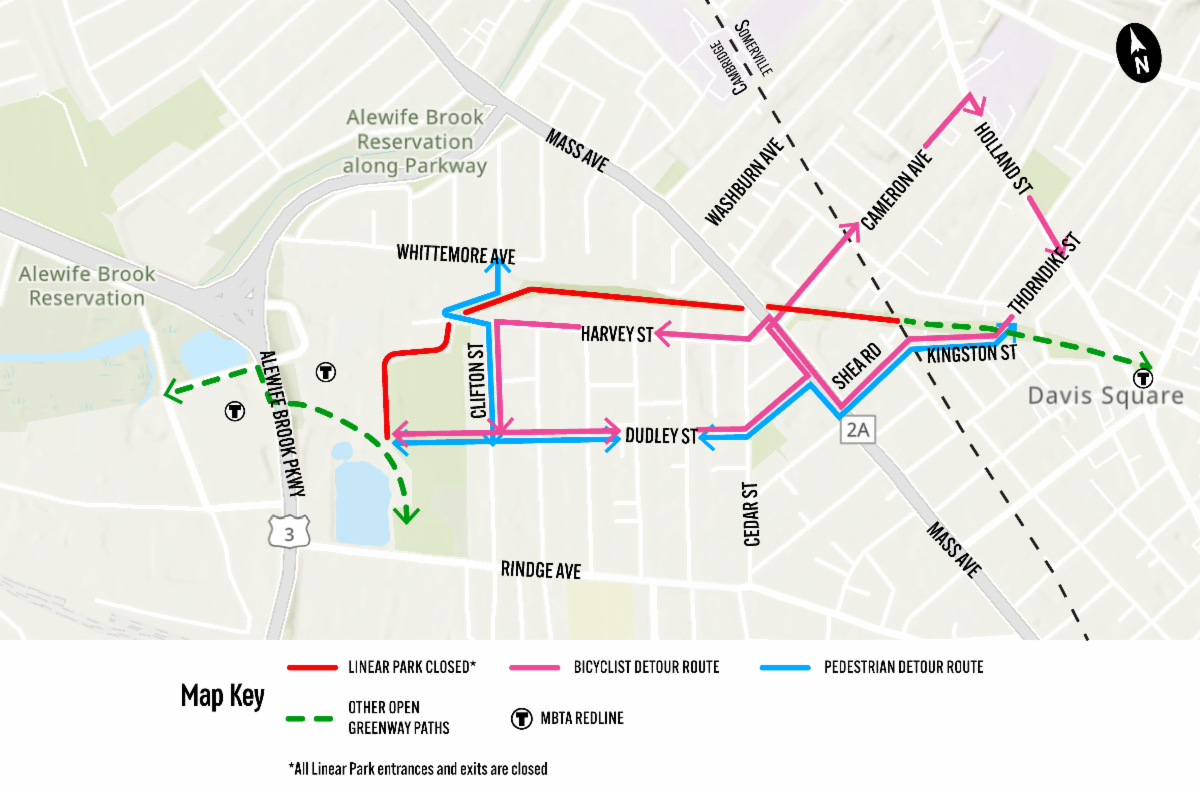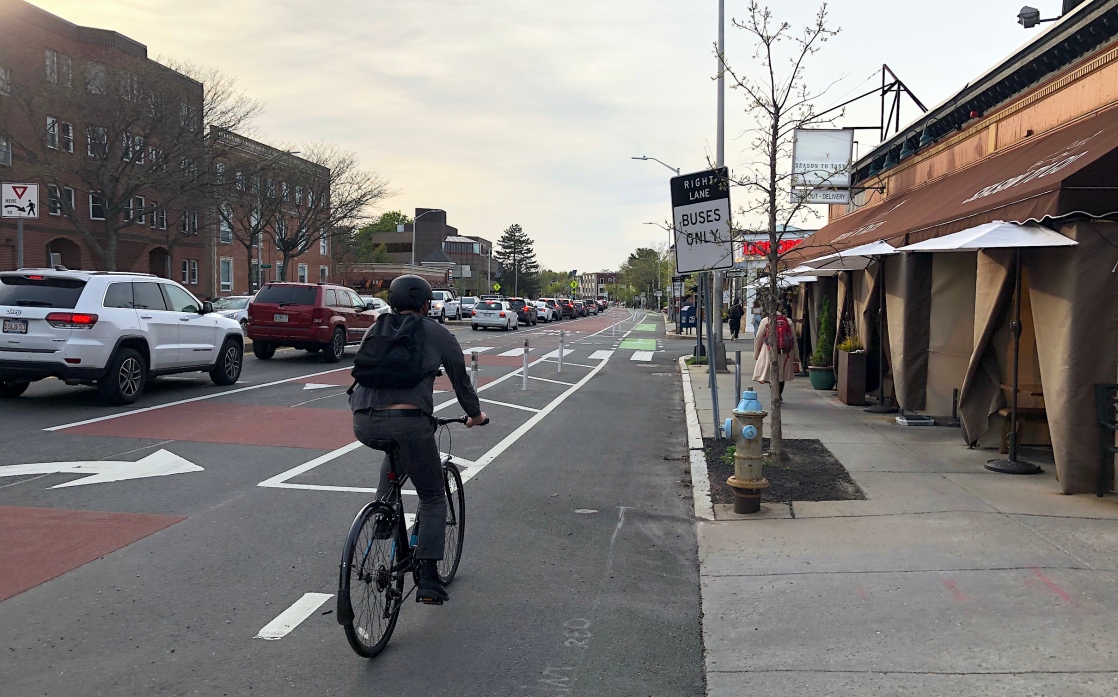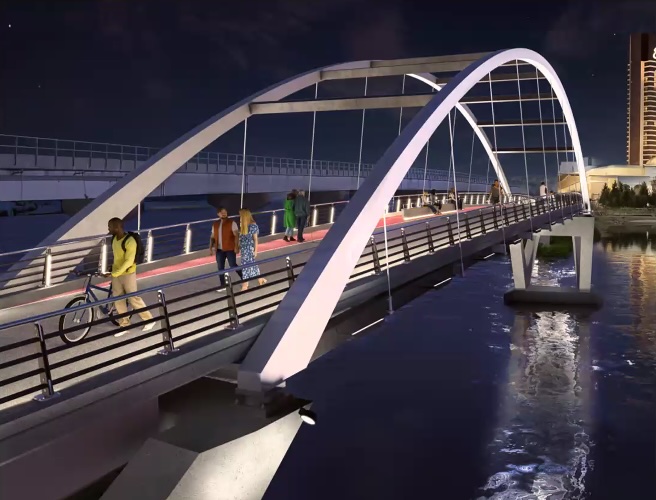Boston Transportation Department officials are pitching a plan that would set aside two lanes of Summer Street though the Seaport District as a new dedicated transitway between the Seaport District and South Station.
The new lanes would primarily benefit riders of the MBTA's 7-City Point bus, which connects South Boston, the Seaport District, South Station, and the downtown financial district. The 7 runs frequently – every 5 to 10 minutes during peak commuting hours – and typically attracts about 4,600 passengers a day.
The project's planners estimate that the proposed dedicated bus lanes could save riders 10 to 20 minutes each trip during rush hours. That time savings could allow the MBTA to run more bus trips along the corridor with the same number of vehicles and drivers, thus reducing wait times and crowding for its riders.
The project would also implement a major portion of the "Center City Link" bus priority corridor, a proposed bus route that would connect North and South Stations to the Seaport District.
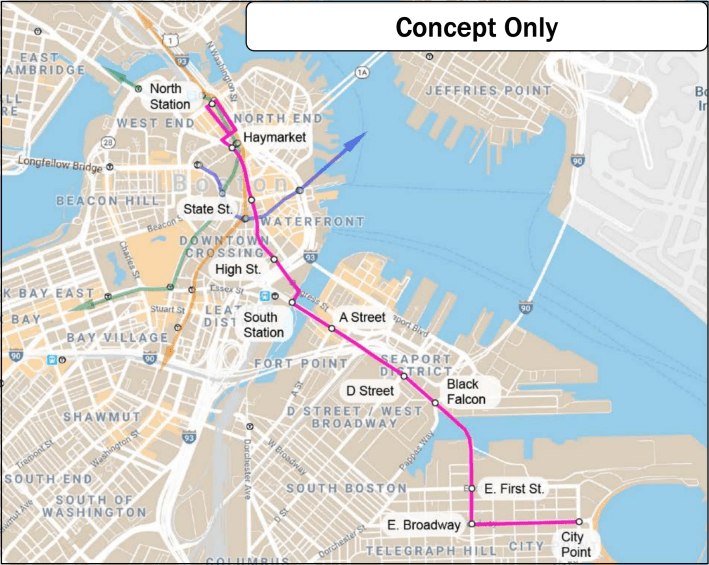
The MBTA and the City of Boston have been collaborating on the Center City Link concept as part of the T's bus network redesign efforts, and while specific operational details are still being worked out, the Summer Street project would create dedicated transit infrastructure for a significant portion of the proposed route.
"The transformation of Summer Street from a vast, auto-centric throughway to a human-centered, multi-modal street anchored by center-running bus lanes and protected walking and biking infrastructure is a huge step forward towards achieving the benefits of true bus rapid transit," wrote Julia Wallerce, Boston Program Manager of the Institute for Transportation & Development Policy (ITDP), in an email to Streetsblog last week.
The IDTP keeps a "scorecard" for bus rapid transit projects that strongly favors center-running bus lanes.
"Moving the buses to the center of the road allows them to travel freely without conflict from turning or parking vehicles," explains Wallerce.
The project would also extend Summer Street's short section of protected bike lanes that were completed last summer through the Fort Point neighborhood further south, to Drydock Avenue. Initially, the new protected bike lanes will be separated from traffic with flexible post bollards, but as new buildings on adjacent parcels go under construction, the street's curbs will be rebuilt block by block to provide more permanent physical separation.
Boston Transportation Department officials hope to complete design and community outreach work for the project over the summer and early fall, and implement the changes in the spring of 2021.
Learn more:
Project website
Project roll plan
